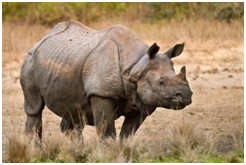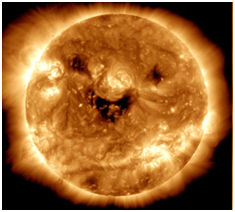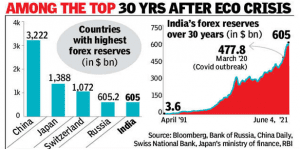DAILY CURRENT AFFAIRS (NOVEMBER 03, 2022)
INDIAN POLITY AND GOVERNANCE
1. PAHARI ETHNIC COMMUNITY ADDED TO SCHEDULED TRIBES LIST OF JAMMU AND KASHMIR
THE CONTEXT: National Commission for Scheduled Tribes (NCST) has cleared the way for the inclusion of the ‘Pahari ethnic group’ in the Scheduled Tribes list of the UT of Jammu and Kashmir.
THE EXPLANATION:
- The proposal green-lit by the commission also called for the inclusion of the “Paddari tribe”, “Koli” and “Gadda Brahman” communities to be included in the ST list of J&K.
- Currently, Jammu and Kashmir have 12 communities that have been notified as STs.
Resentment of Gujjars and Bakarwals:
- Pir Panjal valley is also home to Gujjars and Bakarwals, and the possibility of inclusion of Paharis in the ST list has been looked at as diluting their share of benefits.
Scheduled Tribes in India
- The term ‘Scheduled Tribes’ first appeared in the Constitution of India. Article 366 (25) defined scheduled tribes as “such tribes or tribal communities or parts of or groups within such tribes or tribal communities as are deemed under Article 342 to be Scheduled Tribes for the purposes of this constitution”.
- Article 342, which is reproduced below, prescribes the procedure to be followed in the matter of specification of scheduled tribes.
- The tribal population of the country, as per the 2011 census, is 10.43 crore, constituting 8.6% of the total population.
- 97% live in rural areas and 10.03% in urban areas.
- The decadal population growth of the tribal from Census 2001 to 2011 has been 23.66% against the 17.69% of the entire population.
- The sex ratio for the overall population is 940 females per 1000 males and that of Scheduled Tribes is 990 females per thousand males.
What is the Process of Inclusion in the ST List?
- The process to include tribes in the ST list begins with a recommendation from the respective State governments, which is then sent to the Tribal Affairs Ministry, which reviews and sends them to the Registrar General of India for approval.
- This is followed by the National Commission for Scheduled Tribes’ approval before the list is sent to the Cabinet for a final decision.
What will be the Benefits of Inclusion in the ST List?
- The move will enable members of the communities newly listed in the revised list of Scheduled Tribes to derive benefits meant for STs under the existing schemes of the government.
- Some of the major benefits include post-matric scholarship, overseas scholarship, and national fellowship, besides education, concessional loans from the National Scheduled Tribes Finance and Development Corporation, and hostels for students.
- In addition, they will also be entitled to the benefits of reservation in services and admission to educational institutions as per government policy.
ENVIRONMENT, ECOLOGY AND CLIMATE CHANGE
2. SHRINKAGE OF RHINO HORNS DUE TO THE IMPACT OF HUNTING: STUDY
THE CONTEXT: According to a study, published in the latest edition of People and Nature by the British Ecological Society, the horns of rhinoceroses may have become smaller over time from the impact of hunting.
THE EXPLANATION:
- The horns of rhinoceroses may have become smaller over time due to the impact of hunting, according to a recent study which used an interesting research approach—analysing artwork and photographs of the animal spanning more than five centuries.
- Rhinos have long been hunted for their horns, which are highly valued in some cultures. The five surviving rhino species are still threatened by habitat loss and hunting. The study found that the rate of decline in horn length was highest in the critically endangered Sumatran rhino and lowest in the white rhino of Africa, which is the most commonly found species both in the wild and in captivity.
- This observation follows patterns seen in other animals, such as tusk size in elephants and horn length in wild sheep, which have been driven down by directional selection due to trophy hunting.
VALUE ADDITION:
The Greater One-horned Rhinoceros:
- The greater one-horned rhino (or “Indian rhino”) is the largest of the rhino species.
- It is identified by a single black horn and a grey-brown hide with skin folds.
- It is one of the five species of Rhinos.
The other four species are:
- White rhino: It is native to northern and southern Africa
- Black rhino: It is native to eastern and southern Africa
- Javan rhino: It is also known as Sunda rhino or lesser one-horned rhino
- Sumatran rhino: Critically Endangered species of rhino
Habitat:
- Greater one-horned rhinos are grazers. When not grazing on land, they like to immerse themselves in water, where they also graze on aquatic plants.
- This species of rhino is commonly found in Nepal, Bhutan, Pakistan and in Assam, India.
Protection Status:
- IUCN Red List: Vulnerable
- CITES: Appendix I
- Wildlife Protection Act, 1972: Schedule I
3. THE FIRST ‘THE INTERNATIONAL DAY FOR BIOSPHERE RESERVES’
THE CONTEXT: Following the decision of the 41st session of the General Conference, November 3 is the International Day for Biosphere Reserves. The year 2022 will also see the end of the celebration of the 50th anniversary of the MAB Programme.
THE EXPLANATION:
- The purpose of the International Day for Biosphere Reserves (November 3) is to provide, on an annual basis, a wake-up call on the sustainable development approach to modern life and the leading and exemplary role that the World Network of Biosphere Reserves (WNBR) can play in this regard.
- Encompassing all types of ecosystems and sometimes urban areas, the WNBR has a global presence, comprising 724 sites, 21 of which are transboundary sites, in 131 countries. More than 260 million people have their home in a biosphere reserve. Altogether, these sites protect about 5% of the earth’s surface, or more than 7 million km², an expanse roughly equal to the size of Australia. Every year, an increasing number of sites join the WNBR, and more and more countries will ultimately pursue the objectives and goals of the MAB Programme.
- The Man and the Biosphere (MAB) Programme, launched in 1971, is UNESCO’s oldest intergovernmental scientific programme and it is celebrating its 50th anniversary in 2021 and 2022. The MAB Programme and the biosphere reserve model have, over the past 50 years, become an international example of sustainable territorial development and highlight UNESCO’s and the MAB’s commitment to the global biodiversity agenda and the Sustainable Development Goals.
VALUE ADDITION:
World Network of Biosphere Reserves (WNBR):
- The World Network of Biosphere Reserves of the MAB Programme consists of a dynamic and interactive network of sites of excellence.
- It fosters the harmonious integration of people and nature for sustainable development through participatory dialogue; knowledge sharing; poverty reduction and human well-being improvements; respect for cultural values and society’s ability to cope with change – thus contributing to the 2030 Agenda and the Sustainable Development Goals (SDGs).
- Accordingly, the Network is one of the main international tools to develop and implement sustainable development approaches in a wide array of contexts.
The World Network of Biosphere Reserves promotes North-South and South-South collaboration and represents a unique tool for international co-operation through sharing knowledge, exchanging experiences, building capacity and promoting best practices.
List Of Biosphere Reserves In India (Part of MAB):
- Nilgiri, Tamil Nadu-Kerala (First to be Included)
- Gulf of Mannar, Tamil Nadu
- Sundarban, West Bengal
- Nanda Devi, Uttrakhand
- Nokrek, Meghalaya
- Pachmarhi, Madhya Pradesh
- Similipal, Odisha
- Achanakmar-Amarkantak, Madhya Pradesh-Chhattisgarh
- Great Nicobar, Andaman & Nicobar Island
- Agasthyamala, Karnataka-Tamil Nadu-Kerala
- Khangchendzonga, Sikkim
- Panna, Madhya Pradesh
ECONOMIC DEVELOPMENTS
4. ONE NATION, ONE ITR FORM? HOW WILL CBDT’S NEW PROPOSAL HELP TAXPAYERS?
THE CONTEXT: The Central Board of Direct Taxes (CBDT) has proposed a single income tax return (ITR) form for all taxpayers. A draft form has been released, to which all stakeholders can provide inputs up to December 15, 2022.
THE EXPLANATION:
How many kinds of ITR forms are there now?
There are seven kinds of ITR forms, which are used by different categories of taxpayers. They are as follows:
- ITR Form 1, called ‘Sahaj’, is for small and medium taxpayers. Sahaj forms can be filed by individuals who have an income up to Rs 50 lakh, with earnings from salary, one house property/ other sources (interest etc).
- ITR-2 is filed by people with income from residential property.
- ITR-3 is intended for people who have income as profits from business/ profession
- ITR-4 (Sugam) is, like ITR-1 (Sahaj), a simple forms, and can be filed by individuals, Hindu Undivided Families (HUFs) and firms with total income up to Rs 50 lakh from business and profession.
- ITR-5 and 6 are for limited liability partnerships (LLPs) and businesses respectively.
- ITR-7 is filed by trusts and non-profit organisations.
What is the change that has been proposed?
- According to the proposal, all taxpayers, barring trusts and non-profit organisations (ITR-7), will be able to use a common ITR form, which will include a separate head for disclosure of income from virtual digital assets.
- “According to CBDT, the proposed draft ITR proposes to introduce a common ITR by merging all the existing returns of income except ITR-7”.
According to the CBDT, the proposed ITR form would be customised for taxpayers with applicable schedules, based on certain questions answered by them. Once the common ITR form is notified, after taking into account the inputs received from stakeholders, the online utility will be released by the Income Tax department. “In such a utility, a customised ITR containing only the applicable questions and schedules will be available to the taxpayer”.
SCIENCE AND TECHNOLOGY
5. THE CREEPY SMILE OF SUN
THE CONTEXT: Recently, NASA shared an image of the sun seemingly ‘smiling’. Captured by the NASA Solar Dynamics Observatory, the image has dark patches on the sun’s surface resembling eyes and a smile.
THE EXPLANATION:
NASA explained that the patches are called coronal holes, which can be seen in ultraviolet light but are typically invisible to our eyes.
What are coronal holes?
- According to NASA, these are regions on the sun’s surface from where fast solar wind gushes out into space. Because they contain little solar material, they have lower temperatures and thus appear much darker than their surroundings. Here, the magnetic field is open to interplanetary space, sending solar material out in a high-speed stream of solar wind. Coronal holes can last between a few weeks to months.
- The holes are not a unique phenomenon, appearing throughout the sun’s approximately 11-year solar cycle. They can last much longer during solar minimum – a period of time when activity on the Sun is substantially diminished.
SIGNIFICANCE:
- “These ‘coronal holes’ are important to understanding the space environment around the earth through which our technology and astronauts travel,” NASA had said in 2016 when coronal holes covering “six-eight per cent of the total solar surface” were spotted.
- While it is unclear what causes coronal holes, they correlate to areas on the sun where magnetic fields soar up and away, without looping back down to the surface as they do elsewhere. “Scientists study these fast solar wind streams because they sometimes interact with earth’s magnetic field, creating what’s called a geomagnetic storm, which can expose satellites to radiation and interfere with communications signals”.
6. PLANET KILLER ASTEROID
THE CONTEXT: A team of astronomers has discovered three massive near-Earth asteroids hiding in the glare of the Sun. Of these, one called 2022 AP7 is believed to be the largest planet killer-sized asteroid to be spotted in nearly a decade and is “potentially hazardous” to Earth.
THE EXPLANATION:
- According to a study published in The Astronomical Journal, the three asteroids are from a group that is found within the orbits of Earth and Venus. However, they are tough to spot as the brightness of the Sun shields them from telescope observations.
How did they spot the asteroids?
- The astronomers conducted their observation during twilight hours — a brief but favourable 10-minute window every night. They used a Dark Energy Camera at the Cerro Tololo Inter-American Observatory in Chile.
- With the high-tech camera, a programme of the US’ National Science Foundation’s (NSF’s) NOIRLAB, they were able to capture large swathes of the sky with immense sensitivity. The camera was originally built to carry out a Dark Energy Survey, conducted by the US Department of Energy and the NSF between 2013 and 2019.
- Apart from dealing with the glare of the Sun, the astronomers also had to tackle another major issue — since the asteroids are close to the horizon, they are blurred and distorted by the Earth’s atmosphere.
Is there an immediate threat to Earth?
- According to reports, at present, the asteroid only crosses the Earth’s orbit while it is on the opposite side of the Sun i.e., when the Sun comes between the Earth and the asteroid. This will continue for several centuries as it takes the asteroid about five years to orbit the sun.
- An asteroid of this size could have a “devastating impact”, Sheppard said, as the Earth’s atmosphere would be inundated with dust and pollutants for years, preventing sunlight from entering.
- Over time, its orbital movement will slowly evolve to be more in sync with Earth’s. As of now, however, Sheppard has said it will “stay well away from Earth”.
VALUE ADDITION:
Asteroids
- Asteroids are small, airless rocky worlds revolving around the sun that are too small to be called planets. They are also known as planetoids or minor planets.
- In total, the mass of all the asteroids is less than that of Earth’s moon. But despite their size, asteroids can be dangerous. Many have hit Earth in the past, and more will crash into our planet in the future.
What are the Differences between an Asteroid, Comet, Meteoroid, Meteor and Meteorite?
- Asteroid : A relatively small, inactive, rocky body orbiting the Sun.
- Comet: A relatively small, at times active, object whose ices can vaporize in sunlight forming an atmosphere (coma) of dust and gas and, sometimes, a tail of dust and/or gas.
- Meteoroid: A small particle from a comet or asteroid orbiting the Sun.
- Meteor: The light phenomena which results when a meteoroid enters the Earth’s atmosphere and vaporizes; a shooting star.
- Meteorite: A meteoroid that survives its passage through the Earth’s atmosphere and lands upon the Earth’s surface.
THE PRELIMS PRACTICE QUESTION
QUESTION OF THE DAY
Q1. Which of the following are critically endangered species of Rhino according to IUCN Red Data book?
- Greater one-horned Rhino
- Sumatran Rhino
- Javan Rhino
Select the correct answer using the code given below:
a) 1 and 2 only
b) 2 and 3 only
c) 1 and 3 only
d) 1, 2 and 3
Answer: B
Explanation:
Five species of Rhino in the world:
- Sumatran Rhino: The Sumatran rhino has been on earth longer than any other living mammal. IUCN status- Critically endangered.
- Javan Rhino: The Javan rhino is possibly the rarest large mammal on earth. IUCN status- Critically endangered.
- Black Rhino: Black rhinos are the smaller of the two African species.
- Greater one-horned Rhino: Greater one-horned rhinos are semi-aquatic and often take up residence in swamps, forests and riversides. IUCN status- Vulnerable
- White Rhino: The White rhino is also known as the Square-lipped rhino. There are two subspecies of White rhino:
- Southern: Ceratotherium simum simum approximately between 19,666 and 21,085 individuals exist. The Southern white rhino can be found mostly in South Africa, with smaller translocated populations found in Kenya, Namibia and Zimbabwe.
- Northern: Ceratotherium simum cottoni (only two animals remain). The Northern White Rhino is critically endangered. The sub-species was declared extinct in the wild in 2008, and there are only two individuals remaining in Ol Pejeta Conservancy in Kenya.
